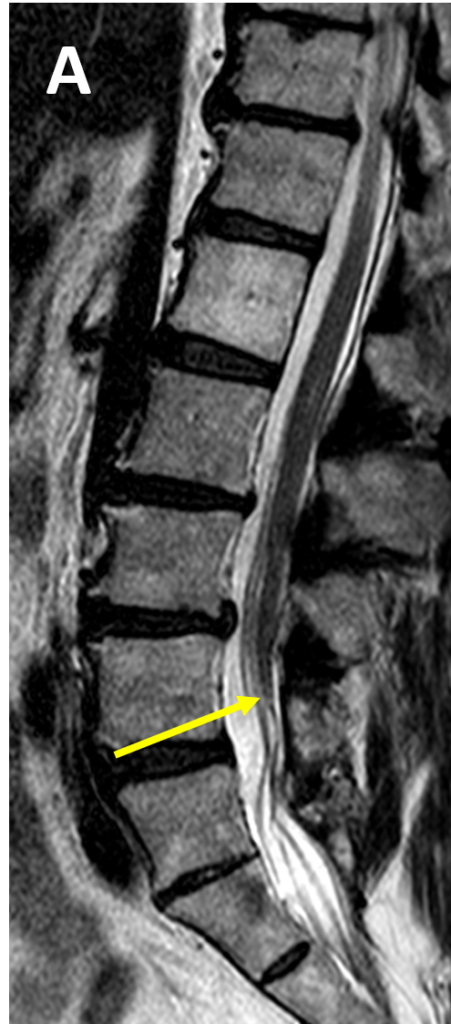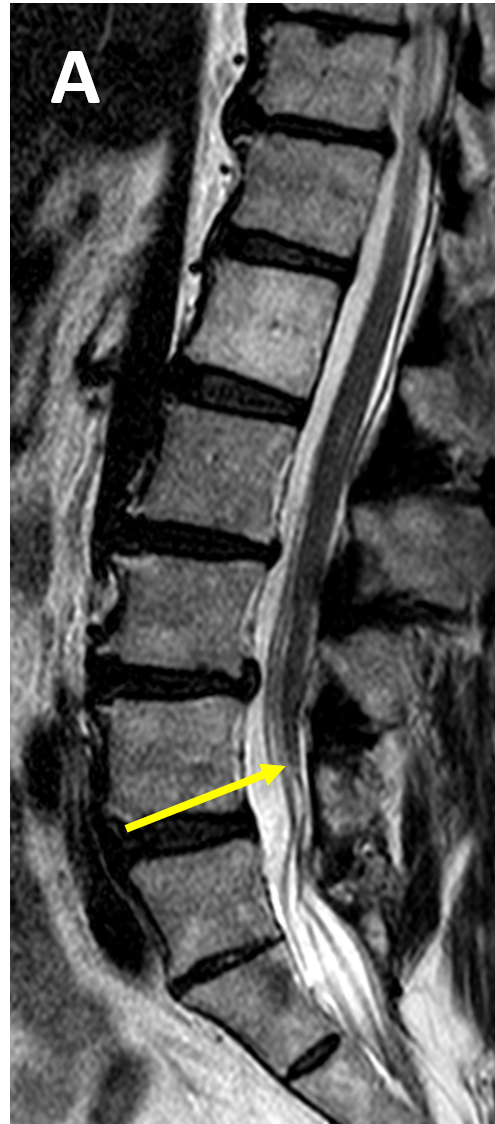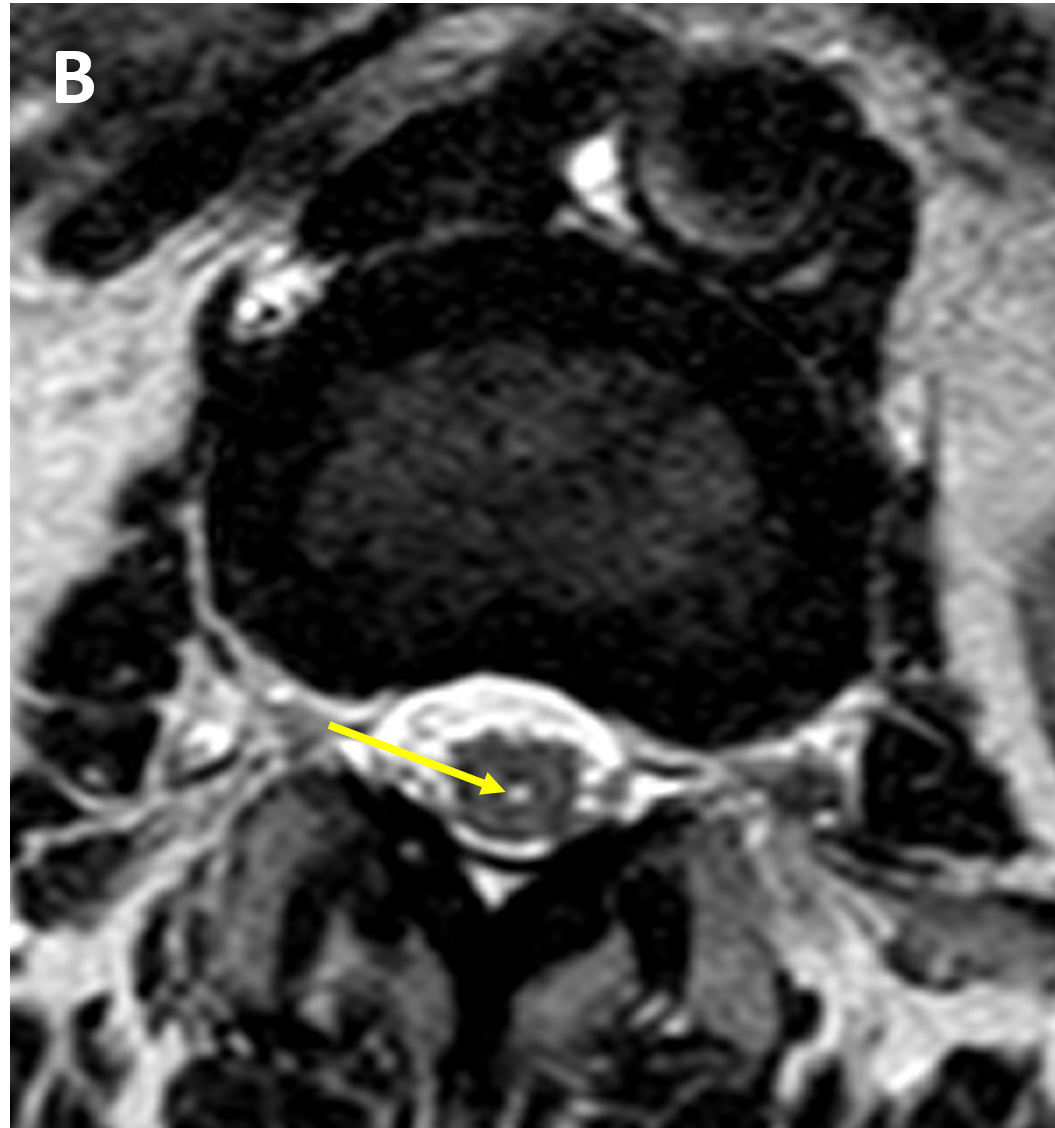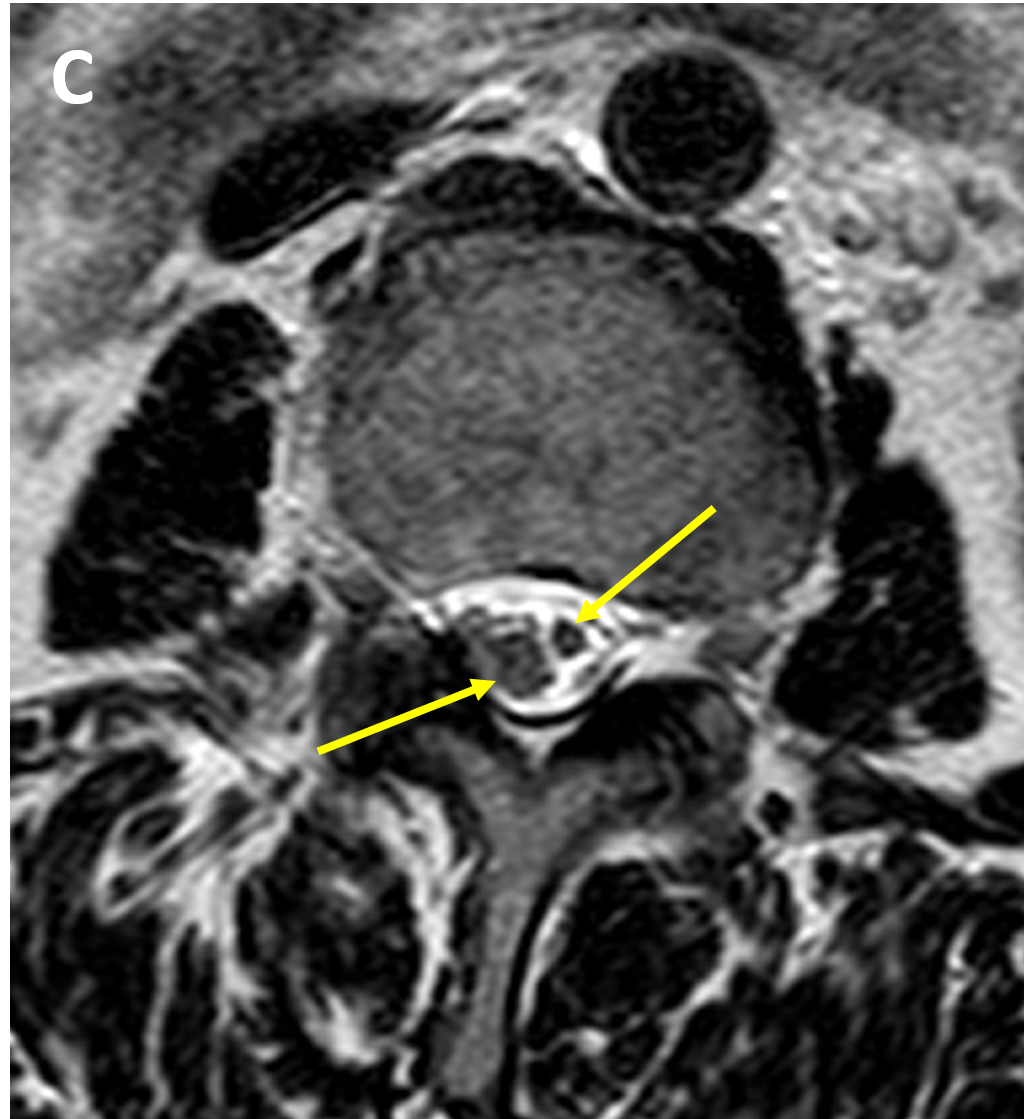Diagnosis Definition
- The conus medullaris (tapered end of the spinal cord) starts to ascend relative to the vertebral bodies during intrauterine development and reaches the typical adult level (L1-L3) by about three months of age
- The filum terminale is a fibrous extension of the pia mater that extends from the apex of the conus medullaris to the coccyx
- Tethered cord syndrome is a neurological disorder caused by tissue attachments that limit the movement of the spinal cord; it is a term most commonly used in reference to patients with a low-lying conus medullaris and a thickened filum terminale
- Primary tethered cord syndrome occurs as an isolated anomaly; secondary tethered cord syndrome occurs in the setting of other abnormalities such as myelo/lipo/meningocele, dermal sinus tract, diastematomyelia (split spinal cord), lipoma, thickened/tight filum terminale, trauma, and surgery
- The syndrome can present with cutaneous manifestations, foot and spinal deformities, leg weakness, low back pain, scoliosis, and incontinence
Imaging Findings
- Ultrasound is useful in the neonatal population; the lack of ossification of the posterior arch of the spine in normal infants and the presence of a bony defect in patients with spina bifida permit sonographic examination
- MRI is the imaging modality of choice for evaluating a tethered cord in older children, and can show the location of the conus medullaris (normally superior to L3), assess the thickness of the filum terminale (normally less than 2 mm in cross-sectional diameter), identify traction lesions, and show associated bony dysraphisms
- The filum can be thickened with fat (seen as T1 hyperintensity), fibrous tissue (T2 hypointensity), or both
Pearls
- Although fibrolipomatous thickening of the filum is present in up to 5% of patents on MRI, the majority do not have symptoms of spinal cord tethering
- Although rare, patients with fibrolipomatous thickening of the filum can become symptomatic at any age
References
- Raghavan N, Barkovich AJ, Edwards M, et al. MR imaging in the tethered spinal cord syndrome. AJR Am J Roentgenol. 1989; 152(4):843-852
- Yousem D, Grossman R. The Requisites: Neuroradiology. 3rd ed. Philadelphia, PA: Mosby-Elsevier; 2010:279-320
Case-based learning.
Perfected.
Learn from world renowned radiologists anytime, anywhere and practice on real, high-yield cases with Medality membership.
- 100+ Mastery Series video courses
- 4,000+ High-yield cases with fully scrollable DICOMs
- 500+ Expert case reviews
- Unlimited CME & CPD hours




